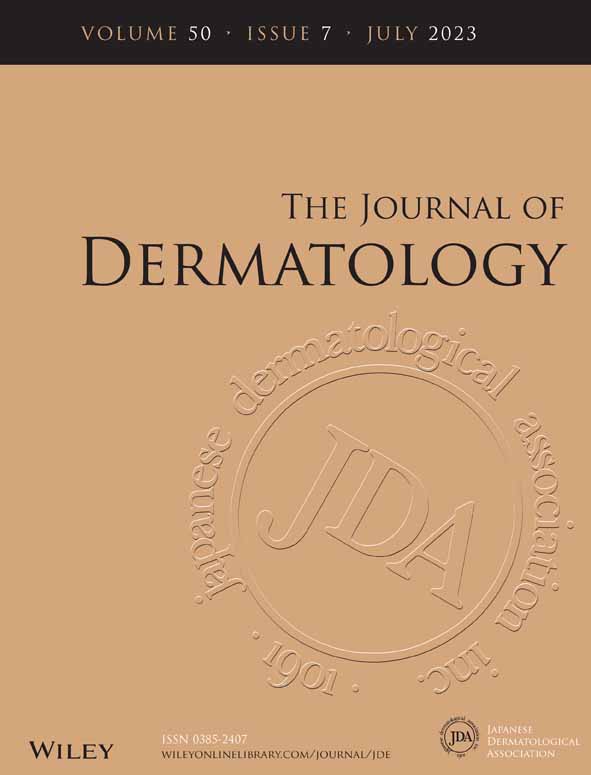The potential value of thallium-201 scintigraphy in the diagnosis of squamous cell carcinoma arising from extensive pyoderma
Abstract
Squamous cell carcinoma (SCC) arises from a variety of premalignant conditions, including pyoderma. However, an accurate diagnosis of SCC is sometimes challenging due to indistinguishable inflammatory lesions. Here, we present a case of SCC arising from extensive pyoderma, which was successfully diagnosed by taking advantage of thallium-201 scintigraphy. A 49-year-old man presented with an elevated tumor on his right buttock. Computed tomography (CT) and enhanced magnetic resonance imaging (MRI) identified the tumor, but many indistinguishable lesions were also found around the tumor. Histopathology revealed an atypical proliferation of keratinocytes with cancer pearls inside the tumor nests, while histopathology of nodules around the tumor revealed inflammatory tissues. Positron emission tomography CT (PET/CT) revealed an accumulation of 2-deoxy-2-[18F]-D-glucose at the axillae and inguinal nodes, and at subcutaneous tissues in addition to the tumor. From the CT, enhanced MRI, and PET/CT analyses it was impossible to differentiate many scattered subcutaneous nodules on the trunk from SCCs. However, thallium-201 scintigraphy identified only the tumor and found no accumulation in other nodules. This finding suggests that thallium-201 scintigraphy is useful for the diagnosis of SCC by excluding false-positive signals detected by other imaging technologies.
CONFLICT OF INTEREST STATEMENT
The authors declare no conflicts of interest.




